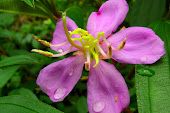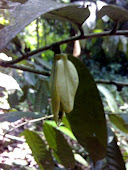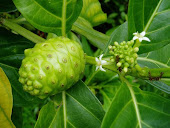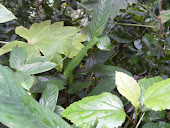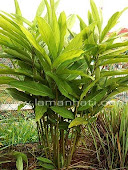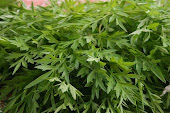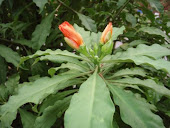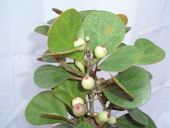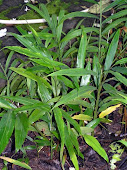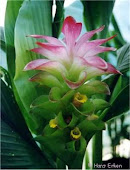Biofeedback: Using your mind to improve your health
By Mayo Clinic staff
Have you ever wished you could simply will your symptoms to disappear? With biofeedback you may be able to do just that by harnessing the power of your mind to help improve your health.
Biofeedback defined
Why it's done
Biofeedback may appeal to you for several reasons:
Risks of biofeedback
What you can expect
Types of biofeedback
Finding a biofeedback therapist
Results of biofeedback
SA00083
Jan. 25, 2008
By Mayo Clinic staff
Have you ever wished you could simply will your symptoms to disappear? With biofeedback you may be able to do just that by harnessing the power of your mind to help improve your health.
Biofeedback defined
Biofeedback is a type of complementary and alternative medicine called mind-body therapy. It's designed to enable you — in mind-over-matter fashion — to use your thoughts and will to control your body. Biofeedback is based on the idea, confirmed by scientific studies, that people have the innate potential to influence with their minds many of the automatic, involuntary functions of their bodies.
To help you develop this ability, a biofeedback specialist uses signals from special monitoring equipment to teach you to control certain body functions and their responses, such as:
- Brain activity
- Blood pressure
- Muscle tension
- Heart rate
- Skin temperature
- Sweat gland activity
You can use biofeedback to help treat many physical and mental health problems when you've learned to recognize and control these functions and responses.
Biofeedback can be particularly useful in treating stress-related conditions, and clinical trials are evaluating it in the treatment of many other conditions, including:
- Asthma
- Headaches
- Hot flashes
- Raynaud's disease
- Irritable bowel syndrome
- Nausea and vomiting associated with chemotherapy
- Irregular heartbeats (cardiac arrhythmias)
- Chronic low back pain
- Chronic constipation
- High blood pressure
- Incontinence
- Epilepsy
Biofeedback may appeal to you for several reasons:
- It may reduce, or even eliminate, your need for medication.
- It has the potential to help conditions that have not responded to medication.
- It helps put you in charge of your own healing by providing measurable feedback, which allows you to monitor your progress and learning.
- It may decrease your medical costs.
Risks of biofeedback
Biofeedback is generally considered safe. It should generally not be used, however, if you have depression, psychosis, or another major mental health disorder. Biofeedback can potentially interfere with some medications, such as insulin, so patients with diabetes should exercise extra caution. Talk to your doctor to see whether biofeedback therapy is an appropriate treatment for you.
What you can expect
You can receive biofeedback training in physical therapy clinics, medical centers and hospitals. A growing number of feedback devices and programs are being marketed for home use as well. But working with a therapist, initially, may provide the best long-term results.
Preparation depends on the type of biofeedback therapy used. A typical biofeedback session lasts 30 to 60 minutes. The length and number of sessions will be determined by your condition and how quickly you learn to control your physical responses.
During a biofeedback session, a therapist will apply electrical sensors to different parts of your body. These sensors will monitor your body's physiological response to stress — for instance, your muscle contraction during a tension headache — then feed the information back to you via cues such as a beeping sound or a flashing light. The feedback will allow you to begin to associate your body's response — in this case, headache pain — with certain physical functions, such as your muscles tensing.
Once you begin to recognize that your headache is a result of tense muscles, the next step is to learn how to invoke positive physical changes in your body, such as relaxing those specific muscles, when your body is physically or mentally stressed. Your eventual goal will be to produce these responses on your own, outside the therapist's office and without the help of technology.
Types of biofeedback
Your therapist may use several different techniques to gather information about your body's responses. Determining the one that's right for you will depend on your particular health problems and objectives. Machines and techniques include:
Electromyogram (EMG). An EMG uses electrodes or other types of sensors to measure muscle tension. By the EMG alerting you to muscle tension, you can learn to recognize the feeling early on and try to control the tension right away. EMG is mainly used to promote the relaxation of those muscles involved in backaches, headaches, neck pain and grinding your teeth (bruxism). An EMG may be used to treat some illnesses in which the symptoms tend to worsen under stress, such as asthma and ulcers.
Temperature biofeedback. Sensors attached to your fingers or feet measure your skin temperature. Because your temperature often drops when you're under stress, a low reading can prompt you to begin relaxation techniques. Temperature biofeedback can help treat certain circulatory disorders, such as Raynaud's disease, or reduce the frequency of headaches.
Galvanic skin response training. Sensors measure the activity of your sweat glands and the amount of perspiration on your skin, alerting you to anxiety. This information can be useful in treating emotional disorders such as phobias, anxiety and stuttering.
Electroencephalogram (EEG). An EEG monitors the activity of brain waves linked to different mental states, such as wakefulness, relaxation, calmness, light sleep and deep sleep. EEG may be used to treat insomnia, epilepsy and other neurological disorders.
Look for a qualified therapist if you decide to try biofeedback. Many biofeedback therapists are licensed in another area of health care — for instance, as a registered nurse or physical therapist — and may work under the guidance of a doctor. Some biofeedback therapists attain certification from the Biofeedback Certification Institute of America (BCIA). You may obtain a list of names of people in your area who have been certified by the BCIA by contacting the organization.
Gather information about each of the potential therapists you identify prior to making an appointment. Ask the therapists to provide references, whether they are licensed in biofeedback or another health care field, and what experience they have treating your specific condition and symptoms. If you can't find a BCIA-certified therapist in your area, ask your doctor or another health professional with knowledge of biofeedback therapy to recommend someone who has experience treating your condition. Check, too, on whether your health insurer will cover the cost of treatment.
Experts aren't entirely sure how the biofeedback therapy works. Many people who've tried it can't explain how they're able to control their bodies, yet experience improvement in their symptoms. Biofeedback may enable you to reduce the amount of medication you take, or even help a condition that hasn't responded well to medication.
Keep a daily diary to monitor your use of the treatment as well as how you feel before, during and after the therapy to assess whether biofeedback is effective in treating your particular symptoms. By learning to control your involuntary body functions, biofeedback may improve your medical condition and teach you valuable techniques for living a healthier life.
SA00083
Jan. 25, 2008
© 1998-2010 Mayo Foundation for Medical Education and Research (MFMER). All rights reserved. A single copy of these materials may be reprinted for noncommercial personal use only. "Mayo," "Mayo Clinic," "MayoClinic.com," "EmbodyHealth," "Enhance your life," and the triple-shield Mayo Clinic logo are trademarks of Mayo Foundation for Medical Education and Research.
HERBS IN HADITH
Part Three of Three: RAMADAN HERBS
By Karima Burns
As Ramadan approaches, we inevitably think about all of the special meals that we will eat during this holy month. After a day of fasting and worship, the Muslim or Muslimah’s reward is not only the sense of peace that he or she has gained, but also the special iftar that waits.
Hibiscus
Dates
.......................................................................................
prepared by, Nur Afifah Shuhardi
Part Three of Three: RAMADAN HERBS
By Karima Burns
As Ramadan approaches, we inevitably think about all of the special meals that we will eat during this holy month. After a day of fasting and worship, the Muslim or Muslimah’s reward is not only the sense of peace that he or she has gained, but also the special iftar that waits.
In many areas of the world such as the Middle East, India, and African countries, iftar meals are filled with traditional foods that can be traced to the time of the prophet (SAW). In other countries, the food may take on the flavor of the country one is in, such as a pizza iftar in America or a taco iftar in Mexico.
However, there are traditional gifts from nature that we should remember wherever we live, gifts that were used by Prophet Mohammed (SAW) in his life, and gifts that assist the fasting Muslim during Ramadan. Among these bounties are the hibiscus flower, dates, rosewater essence, and miswak.
Hibiscus
In the Middle East and Africa, hibiscus is readily served to guests, especially during Ramadan. However, for so many Ramadan traditions like the kunafa (a Ramadan sweet) and the musaharati (the man who wakes people for suhur), few look beyond the tradition for its benefit.

Although the sweet richness of kunafa can claim to nourish the spirit of the believer, the hibiscus flower can lay claim to many physical benefits for the fasting body. Hibiscus is, first of all, a pleasant tasting drink with astringent and, thus, thirst-quenching properties that may it quite useful when consumed during Ramadan. Secondly, a cup of hibiscus tea is 17% citric acid, and contains half as much vitamin C as an orange so it helps to strengthen the immune system. Hibiscus also has similar uses as cranberry juice in treating urinary tract infections, and is also useful for the heart and blood flow. Other properties in the herb help maintain the blood sugar balance in the body, another challenge one must overcome during fasting.
The traditional way to prepare hibiscus is to make a cold infusion. Take a quarter-cup of the herb and soak it in a pitcher of cold water in the refrigerator overnight. In the morning, strain out the hibiscus flowers and add honey to taste. Many people use sugar to sweeten their hibiscus; however, sugar leeches vitamins B and C from the body, can encourage urinary tract infections and counteracts most of the other benefits of the hibiscus as well. The best choice of sweeteners is to use about a teaspoon or more of the herb stevia, a green leafy herb from Paraguay that is sweet and lacks calories much like Nutra-sweet, but with none of the synthetic dangers. Stevia also has blood-sugar balancing properties and, thus, is the safest herb for diabetics.
Dates
Dates are another traditional item to ingest during the iftar. Muslims around the world, following the example of the Prophet (SAW), usually break their fast with dates.  The reason that they are so beneficial is that their natural sugar travels quickly to the liver, and is converted more quickly than any other nutrient into energy that the fasting body soaks up like a sponge. This is the healthiest way of breaking the fast as it eases the body into digesting. Dates contain protein, calcium, phosphorus, iron, potassium, vitamin A, and natural sodium. They also contain a high amount of dietary fiber, which makes them a good digestive aid. Dates are also said to protect the stomach and the intestines from parasites and bacterial infections, so they are an especially good beginning to a meal when traveling or eating at a restaurant.
The reason that they are so beneficial is that their natural sugar travels quickly to the liver, and is converted more quickly than any other nutrient into energy that the fasting body soaks up like a sponge. This is the healthiest way of breaking the fast as it eases the body into digesting. Dates contain protein, calcium, phosphorus, iron, potassium, vitamin A, and natural sodium. They also contain a high amount of dietary fiber, which makes them a good digestive aid. Dates are also said to protect the stomach and the intestines from parasites and bacterial infections, so they are an especially good beginning to a meal when traveling or eating at a restaurant.
 The reason that they are so beneficial is that their natural sugar travels quickly to the liver, and is converted more quickly than any other nutrient into energy that the fasting body soaks up like a sponge. This is the healthiest way of breaking the fast as it eases the body into digesting. Dates contain protein, calcium, phosphorus, iron, potassium, vitamin A, and natural sodium. They also contain a high amount of dietary fiber, which makes them a good digestive aid. Dates are also said to protect the stomach and the intestines from parasites and bacterial infections, so they are an especially good beginning to a meal when traveling or eating at a restaurant.
The reason that they are so beneficial is that their natural sugar travels quickly to the liver, and is converted more quickly than any other nutrient into energy that the fasting body soaks up like a sponge. This is the healthiest way of breaking the fast as it eases the body into digesting. Dates contain protein, calcium, phosphorus, iron, potassium, vitamin A, and natural sodium. They also contain a high amount of dietary fiber, which makes them a good digestive aid. Dates are also said to protect the stomach and the intestines from parasites and bacterial infections, so they are an especially good beginning to a meal when traveling or eating at a restaurant.Rosewater
After the evening meal is finished, Muslims often go straight to make the Tarawih prayers, to which they often like to wear a pure essence of some sort.  Perfume is a food for the soul and the spirit, much like dates and hibiscus are foods for the body. During Ramadan, Muslims need many foods to keep them strong in their religious duties. In one of the best known Hadith of the Prophet Muhammad (SAW), he was quoted as saying, "There are three things in your world that are made to attract my affection: women, perfume, and then my ultimate fondness is securely fixed on prayers."
Perfume is a food for the soul and the spirit, much like dates and hibiscus are foods for the body. During Ramadan, Muslims need many foods to keep them strong in their religious duties. In one of the best known Hadith of the Prophet Muhammad (SAW), he was quoted as saying, "There are three things in your world that are made to attract my affection: women, perfume, and then my ultimate fondness is securely fixed on prayers."
 Perfume is a food for the soul and the spirit, much like dates and hibiscus are foods for the body. During Ramadan, Muslims need many foods to keep them strong in their religious duties. In one of the best known Hadith of the Prophet Muhammad (SAW), he was quoted as saying, "There are three things in your world that are made to attract my affection: women, perfume, and then my ultimate fondness is securely fixed on prayers."
Perfume is a food for the soul and the spirit, much like dates and hibiscus are foods for the body. During Ramadan, Muslims need many foods to keep them strong in their religious duties. In one of the best known Hadith of the Prophet Muhammad (SAW), he was quoted as saying, "There are three things in your world that are made to attract my affection: women, perfume, and then my ultimate fondness is securely fixed on prayers."Rose essence or rosewater is one of the most popular essences for men and women to wear during this time. Besides the fact that it is one of the most heavenly scents, rose essence has a number of aromatherapy benefits as well. Valerie Worwood, in her book The Complete Book of Aromatherapy, notes that rose essence is a powerful anti-depressant, is uplifting, aids in digestion, and soothes frayed nerves during the stressful days of fasting. These benefits can all be enjoyed just by sprinkling some of the water or essence on your body, adding a few drops to your bathwater, or burning the scent in an incense burner in your home.
Miswak
Rosewater is also the preferred soak for miswak which, taken from the branches of a miswak tree, is an answer to every Muslim who has asked, "Is it okay to brush my teeth while fasting?"
This question often arises in modern times because of western tooth brushing methods that  require a mouthful of water and often involve delicious tasting toothpaste. Miswak, on the other hand, is simply soaked until the brushing end is soft, and then gently stroked over the teeth. Imam Al-Bukhari narrated that Abdullah bin Omar brushed his teeth with a miswak morning and evening while fasting.
require a mouthful of water and often involve delicious tasting toothpaste. Miswak, on the other hand, is simply soaked until the brushing end is soft, and then gently stroked over the teeth. Imam Al-Bukhari narrated that Abdullah bin Omar brushed his teeth with a miswak morning and evening while fasting.
 require a mouthful of water and often involve delicious tasting toothpaste. Miswak, on the other hand, is simply soaked until the brushing end is soft, and then gently stroked over the teeth. Imam Al-Bukhari narrated that Abdullah bin Omar brushed his teeth with a miswak morning and evening while fasting.
require a mouthful of water and often involve delicious tasting toothpaste. Miswak, on the other hand, is simply soaked until the brushing end is soft, and then gently stroked over the teeth. Imam Al-Bukhari narrated that Abdullah bin Omar brushed his teeth with a miswak morning and evening while fasting.A fasting person, in fact, is in more need of tooth brushing than the non-fasting person since vapors from the empty stomach tend to bind to the teeth and gums. Miswak helps to keep the breath fresh and pure. Among the other benefits of using miswak are that it clears the brain, generates a sense of well-being, remedies the stomach for the next meal, embraces the prophetic tradition, adds to ones merit, pleases Allah, and delights the angels.
During this Ramadan, remember the gifts of nature for they are really gifts from Allah to us to ease us through our fasts. The verse Al-Asharh (Surah 94:5) that we recite during Tarawih prayers says, " So, verily with every difficulty there is relief."
.......................................................................................
Karima Burns, MH, ND has a Doctorate in Naturopathy and a Masters in Herbal Healing. She has studied natural healing for 12 years, published a natural healing newsletter for 4 years, and writes extensively on natural healing and herbs. Sister Karima became interested in natural healing after ending her personal lifelong struggle with asthma, allergies, chronic ear infections, depression, hypoglycemia, fatigue and panic attacks with herbs and natural therapies.
prepared by, Nur Afifah Shuhardi
Betel leave
Botanical name: Piper Betle
a.k.a Betel Pepper
Piper sermentosum syn. Chavia sermentosum
F. Piperaceae

Description
Ingredients
Benefits
Precautions
References:
http://www.instah.com/herbs/health-benefits-of-betel-leaf/
http://herbs.ygoy.com/health-benefits-of-betel-leaves/
http://www.herbsarespecial.com.au/free-herb-information/betel-leaf.html
http://www.nzhealth.net.nz/herbs/coriander.shtml
http://www.tradewindsfruit.com/betel_leaf.htm
http://en.wikipedia.org/wiki/Betel
Botanical name: Piper Betle
a.k.a Betel Pepper
Piper sermentosum syn. Chavia sermentosum
F. Piperaceae

Betel is a leaf of the vine that belongs to Piperaceae family which includes kava and pepper. It is a mild stimulant and has medicinal properties. It is a creeper and is evergreen. It has glossy leaves that are heart-shaped as well as white catkin. It originated from the South as well as South East Asia (Sri Lanka and India).
In Urdu, Bengali and Hindi, the betel leaf is known as Paan. Being a creeper it requires a pole or a compatible tree to grow. Fertile as well a high lands are best for cultivating betel leaves. Saline, waterlogged and alkaline soils are good for growing this plant.
Betel plant is slender and aromatic, which roots at the nodes.
Description
A green leafy vine growing as a ground cover or small climber, very similar in growth habits to pepper. The betel leaf plant is a branching vine (that may climb as high as 10-15ft) although it often grows as an understory ground cover.
Ingredients
- Protein (3.1%)
- Fat (0.8%)
- Minerals (2.3%)
- Fiber (2.3 %)
- Carbohydrates (6.1%)
- Calcium
- Riboflavin
- Carotene
- Niacin
- Thiamine
- Vitamin
- Sugar
- Tannins
- Diastases
- Also contains essential oil
Benefits
- The never-ending list of health properties of betel leaves is about as long and intriguing as the River Ganges. In Ayurvedic medicine (that holistic system of healing that originated in India some 3,000 to 5,000 years ago) the leaves are said to be an aphrodisiac (of course they are) and a breath freshener, which clearly helps in the amorous department
- Beyond the bedroom, betel leaf has been used since ancient times as an aromatic stimulant and anti-flatulent.
- In India, the betel leaf is used as a suppository to cast out worms.
- In Indonesia it is said to rid a warm body of Candida, blemishes and mouth ulcers and is praised for its digestive powers.
- Betel leaf juice is credited with diuretic properties. Its juice, mixed with dilute milk and sweetened slightly, helps in easing urination.
- Betel leaves are beneficial in the treatment of nervous pains, nervous exhaustion and debility. The juice of a few betel leaves, with a teaspoon of honey, will serve as a good tonic. A teaspoon of this can be taken twice a day.
- The betel leaf has analgesic and cooling properties. It can be applied with beneficial results over the painful area to relieve intense headache.
- Consumption of betel leaves instantly relieves Constipation.
- Applied locally, betel leaves are beneficial in the treatment of inflammation such as arthritis.
- Betel leaves can be used to heal wounds. The juice of a few leaves should be extracted and applied on the wound. Then a betel leaf should be wrapped over and bandaged. The wound will heal up with a single application within 2 days.
- The herb is also an effective remedy for boils. A leaf is gently warmed till it gets softened, and is then coated with a layer of castor oil. The oiled leaf is spread over the inflamed part. This leaf has to be replaced, every few hours. After a few applications, the boil will rupture draining all the purulent matter. The application can be made at night and removed in the morning.
- A hot poultice of the leaves or their juice mixed with some bland oil such as refined coconut oil can be applied to the loins with beneficial results in lumbago.
- Betel leaves are beneficial in pulmonary affection in childhood and old age. The leaves, soaked in mustered oil and warmed, may be applied to the chest to relieve cough and difficulty in breathing.
Precautions
Cancer of the mouth and lips has been found to be more frequent in areas where the betel chewing habit is widely prevalent. Other ill-effects of pan-chewing like dyspepsia, cancer of the tongue and cheeks have also been observed amongst excessive chewers.
References:
http://www.instah.com/herbs/health-benefits-of-betel-leaf/
http://herbs.ygoy.com/health-benefits-of-betel-leaves/
http://www.herbsarespecial.com.au/free-herb-information/betel-leaf.html
http://www.nzhealth.net.nz/herbs/coriander.shtml
http://www.tradewindsfruit.com/betel_leaf.htm
http://en.wikipedia.org/wiki/Betel
Labels:
arthritis,
benefits,
betel leaves,
colon cleanser,
diarrhea,
facts,
headache,
herbs,
nervous,
preparation
0
comments
|
|


Original Articles:
http://www.nlm.nih.gov/medlineplus/acupuncture.html
http://altmedicine.about.com/cs/treatmentsad/a/acupuncture.html
Research has shown that acupuncture reduces nausea and vomiting after surgery and chemotherapy. It can also relieve pain. Researchers don't fully understand how acupuncture works. It might aid the activity of your body's pain-killing chemicals. It also might affect how you release chemicals that regulate blood pressure and flow.
Acupuncture is a component of traditional Chinese medicine that originated in China over 5,000 years ago. It is based on the belief that living beings have a vital energy, called "qi", that circulates through twelve invisible energy lines known as meridians on the body. Each meridian is associated with a different organ system. An imbalance in the flow of qi throughout a meridian is how disease begins. American practices of acupuncture use medical traditions from China, Japan, Korea and other countries. In the United States, the best-known type involves putting hair-thin, metallic needles in your skin.
It is based on the belief that living beings have a vital energy, called "qi", that circulates through twelve invisible energy lines known as meridians on the body. Each meridian is associated with a different organ system. An imbalance in the flow of qi throughout a meridian is how disease begins. American practices of acupuncture use medical traditions from China, Japan, Korea and other countries. In the United States, the best-known type involves putting hair-thin, metallic needles in your skin.
Acupuncturists insert needles into specified points along meridian lines to influence the restore balance to the flow of qi. There are over 1,000 acupuncture points on the body.
In 1997, acupuncture needles were reclassified from "experimental" to "medical device" by the U.S. Food and Drug Administration (FDA). The National Institutes of Health released a consensus statment in the same year endorsing acupuncture for the treatment of a variety of conditions such as post-operative pain, tennis elbow, and carpal tunnel syndrome.
Acupuncture is one of the best known of the alternative therapies. The FDA estimates that people in the United States spend more than $500 million annually on acupuncture treatments. Many people have insurance coverage for acupuncture.
In 1997, acupuncture needles were reclassified from "experimental" to "medical device" by the U.S. Food and Drug Administration (FDA). The National Institutes of Health released a consensus statment in the same year endorsing acupuncture for the treatment of a variety of conditions such as post-operative pain, tennis elbow, and carpal tunnel syndrome.
Acupuncture is one of the best known of the alternative therapies. The FDA estimates that people in the United States spend more than $500 million annually on acupuncture treatments. Many people have insurance coverage for acupuncture.
How Acupuncture Works
There are numerous theories about how acupuncture works. Some of them are:
- acupuncture stimulates the release of pain-relieving endorphins
- acupuncture influences the release of neurotransmitters, substances that transmit nerve impulses to the brain
- acupuncture influences the autonomic nervous system
- acupuncture stimulates circulation
- acupuncture influences the electrical currents of the body
Conditions Treated By Acupuncture
- migraines and tension headaches
- sinusitis
- common cold
- addictions, quit smoking
- trigeminal neuralgia
- Meniere's disease
- tennis elbow
- sciatica
- arthritis
- menstrual cramps
- fibromyalgia
- low back pain
- asthma
- weight loss
- infertility
What a Typical Acupuncture Treatment is Like
Before the initial appointment, clients usually complete a health history questionnaire.
The acupuncturist then interviews the client, asking about his or her primary health concern, lifestyle habits, diet, emotions, menstrual cycle, sleep, temperature, appetite, stress, and sensitivity to foods, temperature, and seasons. During the interview, the acupuncturist examines the client carefully, noting his or her face color, voice, and tongue colour and coating. There are also three pulse points at the wrist of each hand that the acupuncturist will assess to further determine the health of the 12 meridians.
After the interview, the acupuncturist gives a diagnosis and begins treatment. Typically, the acupuncturist will use 6-12 needles during the treatment. The number of needles used does not correspond with the intensity of the treatment, rather it is the precise placement of the needles that is important.
Upon insertion, the client may feel a slight sting or prick. Once the needle is inserted, there should be no pain. You should feel comfortable during the treatment. If you experience pain, numbness, or discomfort, notify the acupuncturist immediately.
Treatment length varies from seconds to longer than one hour. The typical length is about 20 to 30 minutes. The acupuncturist may use the following techniques during the treatment:
After the interview, the acupuncturist gives a diagnosis and begins treatment. Typically, the acupuncturist will use 6-12 needles during the treatment. The number of needles used does not correspond with the intensity of the treatment, rather it is the precise placement of the needles that is important.
Upon insertion, the client may feel a slight sting or prick. Once the needle is inserted, there should be no pain. You should feel comfortable during the treatment. If you experience pain, numbness, or discomfort, notify the acupuncturist immediately.
Treatment length varies from seconds to longer than one hour. The typical length is about 20 to 30 minutes. The acupuncturist may use the following techniques during the treatment:
- moxibustion - heating of acupuncture needles with dried herb sticks to activate and warm the acupuncture point. Also known as "moxa".
- cupping - the application of glass cups to create a suction on the skin. This is to relieve stagnation of qi and blood, e.g. in sports injury.
- herbal medicine - Chinese herbs may be given in the form of teas, pills, and capsules to supplement acupuncture treatment.
- electrostimulation - provides electrical stimulation to two to four acupuncture needles. Can be used for pain relief and muscle pain.
- laser acupuncture - non-needle stimulation of needles


